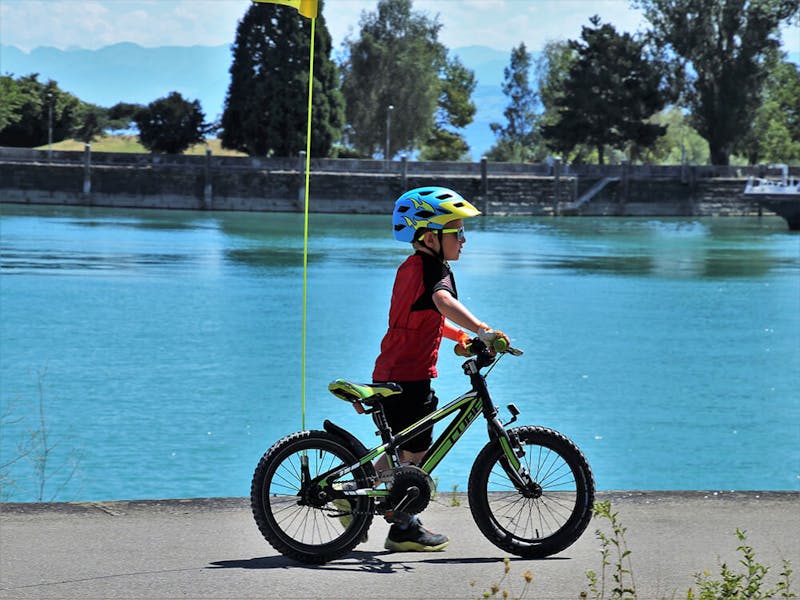
Children want to have fun no matter how dangerous the activity might be. As a parent, you want them to be as safe as possible. When it comes to riding a bike, the way for you and your child to have the best of both worlds is to have them wear a helmet. In order for them to be really safe, though, the helmet must be put on correctly.
In the event of a bicycle accident, you’ll want to make sure that your child is wearing their equipment properly to best prevent a head injury. If an accident does happen at the hand of a negligent driver or otherwise, you’ll want a bicycle accident lawyer who will handle your case with care. At McMath Woods, P.A., we know how devastating these accidents can be, so we’ll do everything we can to ensure you get a fair settlement.
First, let’s look at how to properly fit a child’s bike helmet to prevent head injuries.
Steps to Follow for Putting on Your Child’s Bike Helmet
You might think children’s bike helmets are one size fits all, but that’s not the case. You need to be diligent when buying a helmet for your child so you can be sure they are as safe as possible while riding their bike since one third of bicyclists’ injuries are to the head. Here are the steps to follow when figuring out what helmet to buy and how to properly put it on your child’s head:
- Measure your child’s head in centimeters with a measuring tape. The tape should go across the middle of their forehead and directly across the back of the head.
- Find a helmet with measurements that match the size of your child’s head.
- Place the helmet on your child’s head so that the top is flat horizontally. The front edge should hit in the middle of the forehead, and the back should hit in the middle of the back of the head. It should not be tilted too far forward or too far backwards because either way leaves critical parts of your child’s head exposed to potential injury.
- Use the dial in the back of the helmet to adjust the straps for circumference, and side straps to adjust under the chin. Adjust both to fit snugly on your child’s head. For size reference, you should only be able to fit one finger in between the chin strap and your child’s chin. If it’s too loose, it can easily fall off.
- Make sure the side straps form a V-shape around your child’s ears.
Before allowing your child to ride their bike, ask them to wiggle their head around with their helmet on. If it’s on correctly and tightly, it should not move. If the helmet moves on their head, you’ll need to readjust. If you still have questions about how to fit a helmet on your child’s head, the National Highway Traffic Safety Administration (NHTSA) has videos that can help.
Arkansas Laws for Wearing Helmets
Before sending your child off riding their bike, you might want to look up the state laws regarding helmets. Even though Arkansas does not have specific law requiring children to wear a helmet while riding a bicycle, they do recommend that any rider should wear a helmet to reduce head injury in the event of a crash.
Just because it’s not in the law doesn’t mean you shouldn’t wear a helmet. Helmets reduce the odds of head injury by about 50 percent, according to the Insurance Institute for Highway Safety (IIHS). As a parent, you want what’s best for your child, and when riding a bicycle, that’s wearing a helmet. Even though a helmet can’t guarantee your child will be completely safe, it can at least offer more protection from head injury than not wearing a helmet.
Bicycle accident injuries can be devastating. At McMath Woods, P.A., we believe that you shouldn’t have to worry about the financial struggles that come with a bicycle accident that wasn’t your fault. Our Little Rock bicycle accident lawyer will help you with the legal side of things so that you can focus on healing your physical and emotional injuries from the crash. Reach out to us today if you believe you have a claim so we can start discussing your legal options as soon as possible and start working toward getting you the compensation you deserve.

